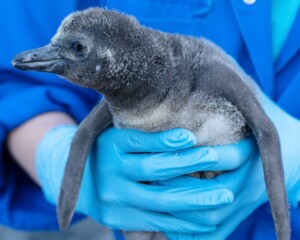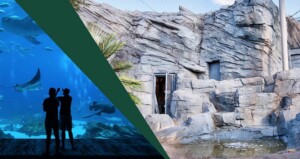PGAV Destinations, a global leader in the planning and design of unique destinations, has been selected to design the new Big Bear Alpine Zoo, California.
Big Bear Alpine Zoo (BBAZ) is an animal rescue and rehabilitation facility which was founded in 1959 after the San Bernardino National Forest wild fire. The Zoo is relocating to the City of Big Bear Lake, with the new site offering improved size and quality of enclosures as well as better facilities for health, welfare, rehabilitation and release. Construction is scheduled to begin in October 2015.
 BBAZ offers refuge to a wide range of animals including Huckleberry the three-legged black bear, birds of prey, a family of grizzly bears, two timber wolf packs, a pair of orphaned sibling mountain lions as well as animals injured in accidents or illegal hunting. 90% of the animals brought in for rehabilitation at BBAZ are released back into the wild.
BBAZ offers refuge to a wide range of animals including Huckleberry the three-legged black bear, birds of prey, a family of grizzly bears, two timber wolf packs, a pair of orphaned sibling mountain lions as well as animals injured in accidents or illegal hunting. 90% of the animals brought in for rehabilitation at BBAZ are released back into the wild.
PGAV Destinations has been tasked with overseeing the design of the new Zoo’s exhibits, support facilities, interpretation, landscaping as well as staff facilities, ticketing, retail and offices
The St Louis based firm has extensive hands-on experience in zoo and destination location design. Debra Richardson, BBAZ curator, says, “PGAV Destinations was the perfect fit [for this project]. I think they’re awesome. They’re an excellent company, they’ve done a lot of work with different zoos, and they’ve worked with us in the past, so we know the quality of the work.”

The design of BBAZ presents unique challenges. Whereas normally a zoo is designed around specific animal exhibits, in this case the exhibit spaces will need to be flexible to accommodate a constantly changing collection of animals. Also the focus is very much on creating the best environment for animals with unique disabilities and needs, rather than an immersive guest environment or a themed display.
Commenting on the project, PGAV Destinations project lead Stacey Tarpley says, “We’re really focusing on how to tell the Zoo’s story and how to bring their mission to the forefront of everything at the new site. We’ll be drawing on our recent experiences with similar-missioned projects like the Heart of Africa at the Columbus Zoo, Glacier Run at the Louisville Zoo, Edge of Africa at Busch Gardens, and Florida’s Dolphin Research Center.
“It’s a fascinating way to approach zoo exhibit design. It’s not about designing a raccoon habitat or a snow leopard habitat. It’s about designing flexible spaces with appropriate enrichment for the types of animals that may inhabit them in the future, from the curious and energised, to the calm and sedate, to the social. We need to deeply understand the wide variety of animal behaviours and abilities that might live in these spaces, and then create the most comfortable and stimulating environments appropriate for that variety.”















